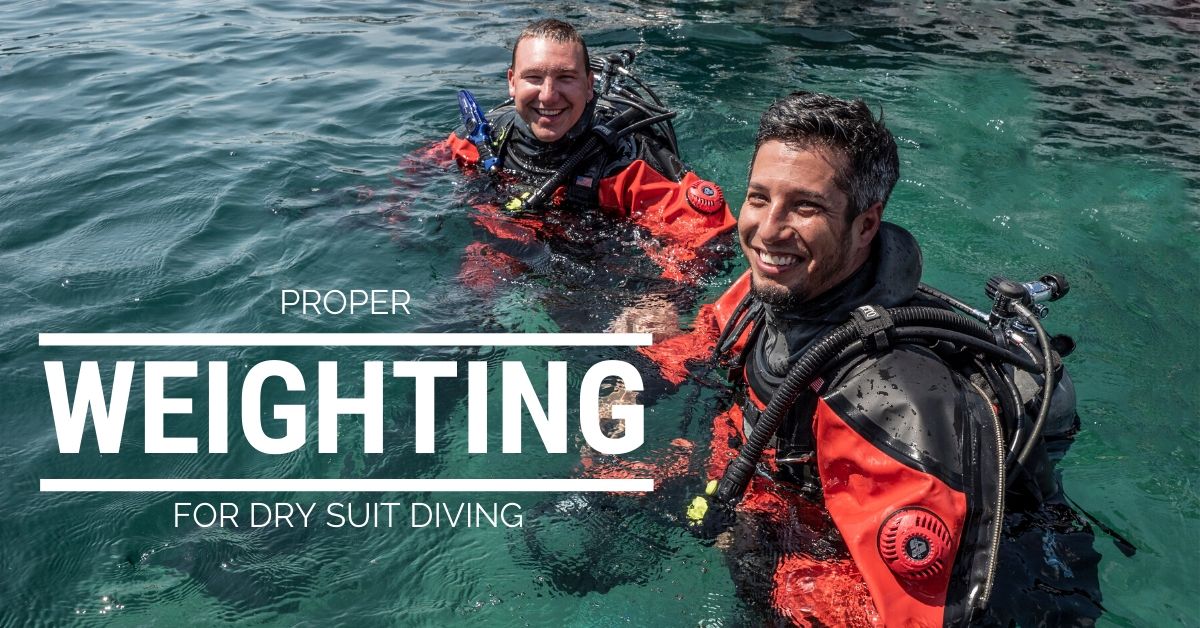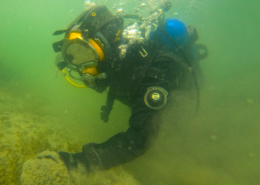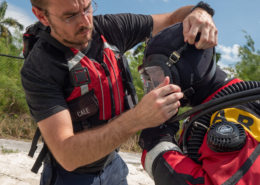Proper Weighting for Dry Suit Diving
How much weight do you need for dry suit diving? Most people find that they do not need to add a great deal of extra weight to their weight belt for diving with a dry suit compared to diving with a wetsuit. In fact, some people can actually dive with exactly the same amount of weight (or less) with their dry suit as they do with a wetsuit.
As a general rule of thumb, most people will need an additional 4 to 6 pounds of weight while diving with a dry suit compared to what they wear with their normal thermal protection while diving in the same waters. Each person will have different needs depending on their personal buoyancy, the type of dry suit they are using, the fit of the suit, the type and thickness of the underwear they are wearing, the buoyancy characteristics of their scuba cylinder, and any accessories they are carrying. Working with an experienced dry suit instructor is essential to help you determine your individual weight requirements.
Even the same person may require very different amounts of weight depending on the gear he or she uses. When wearing a snug fitting crushed neoprene dry suit with thin Polartec underwear and a high-pressure steel cylinder a person will require less weight then when he’s wearing a baggy urethane coated dry suit, thick Thinsulate underwear, and a low-pressure cylinder.
Your goal as a dry suit diver is to dive with the minimum amount of weight possible, and the minimum volume of air in your dry suit. Your suit should feel as though it is hugging you gently but firmly over your entire body. This is normal. If it’s not, you have too much air in your suit and you will have a difficult time controlling your buoyancy. Your suit should not feel like it’s hurting you or making it difficult to move, but it should feel snug up against your body.
In a mistaken attempt to control their buoyancy, some divers add lots of extra weight to their belt to try to hold themselves on the bottom. If you do this, you will have to add a large amount of air to your suit. When this bubble of air shifts in your suit as you move underwater, it is uncomfortable, and potentially dangerous, and can lead to hazardous situation if you are unprepared to cope with it.
For a more in-depth look at proper weighting for dry suit diving, make sure and check out our Dry Suit Course, A Guide to Dry Suit Diving, or contact your local SDI Dive Facility.
The above material was excerpted from Dry Suit Diving book and used with permissions from Hammerhead Press. © 2006-2010 Hammerhead Press. All rights reserved.


 Photo By: Defense Visual Information Distribution Service
Photo By: Defense Visual Information Distribution Service


 Y. ZIN
Y. ZIN


댓글을 남겨주세요
토론에 참여하시겠어요?언제든지 참여하세요!